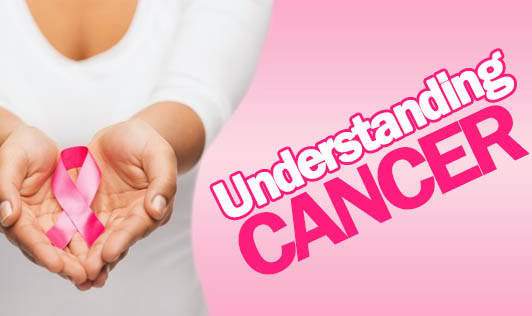Understanding Cancer
- 38 months ago
Cancer is a disease which occurs when changes in a group of normal cells within the body lead to uncontrolled, abnormal growth forming a lump called a tumour; this is true of all cancers except leukaemia (cancer of the blood). If left untreated, tumours can grow and spread into the surrounding normal tissue, or to other parts of the body via the bloodstream and lymphatic systems, and can affect the digestive, nervous and circulatory systems or release hormones that may affect body function.
Warning Signals of Cancer
Many a time, cancer does not show any symptoms, especially in the early stages. Consult your physician if you notice any of these signs -
- Change in bowel or bladder movements(long term constipation/diarrhea)
- A sore that does not heal
- Unusual bleeding or discharge
- Thickening or lump in any part of your body
- Indigestion or difficulty in swallowing
- Obvious change in wart or mole
- A nagging cough or hoarseness
Other Signals
• Unexplained weight loss of more than 5 kg
• Extreme fatigue that does not get better with rest
• White patches in the mouth or white spots on the tongue
Controllable risk factors for Cancer
• Tobacco use: A direct link between smoking and cancers of the lung, mouth, larynx, cervix, and esophagus has been established. Tobacco use includes cigarettes, cigars, pipe smoking, chewing tobacco and inhaling tobacco (snuff).
• Obesity, diet & exercise: Obesity is a risk factor for cancers of the breast, colon, prostate, uterus and gallbladder. Nearly one-third of all cancer deaths are related to a combination of dietary factors and lack of physical activity in adulthood.
• Alcohol and drugs: The excessive use of alcohol and addictive drugs weakens the body's defense system, making it difficult to fight cancer. Alcohol is a risk factor for cancers of mouth, colon, pancreas, liver, esophagus.
• Ultraviolet (UV) radiation: Exposure to UV rays from the sun increases the risk of skin cancer.
Uncontrollable risk factors for Cancer
• Age: The risk of many cancers, such as breast, prostate, colorectal, increases with age.
• The family history of cancer: Ovarian and breast cancer are two common examples. Women with a mother or sister who has had either disease are more likely to develop the disease themselves.
• Gender: Many cancers show equal prevalence among gender lines, while some are exclusively specific to male or female. For example, men are at risk for prostate cancer and women are at risk for breast cancer.
• Infectious exposure: Some forms of cancer may be related to exposure to viral or bacterial infections. The bacterium Helicobacter pylori that causes peptic ulcers is also associated with stomach cancer.
Did you know?
There are more than 100 types of cancers and can affect any part of the body








